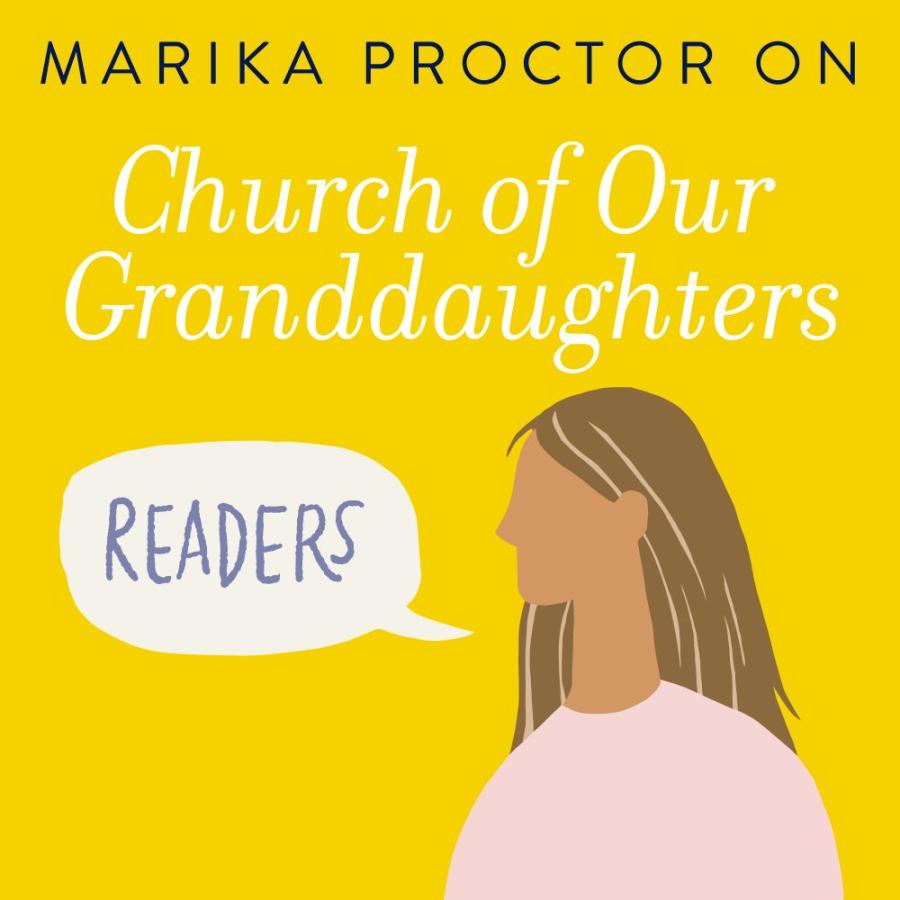
This piece is second in a series of four blog posts by women from different jurisdictions. We'll be holding a webinar on July 30 by Carrie Frederick Frost, who will be speaking about her new book, Church of Our Granddaughters, focusing especially on menstruation. (You can register for that event here.) This is by Marika Proctor, who is recently earned her master's degree in religion and the arts:
It was a surprise to me that many of the liturgical practices I considered normal were described by author Carrie Frederick Forst as exceptions in Church of Our Granddaughters. For as long as I can remember, at my home parish, women have carried the shroud on Holy Friday night and infant girls have been carried through the altar during baptismal churching prayers. The abstinence from/prohibition of women receiving the eucharist during menstruation remains genuinely foreign to me.
The book provoked me to reflect, with a certain sheepishness, on how I have taken my local practices for granted amidst the greater diversity of practices within our tradition. Liturgical scholar Robert Taft coined the phrase, “All liturgy is local.” Liturgy is this way, in part, because liturgy is also living. This is one of the authentic qualities of our Orthodox tradition: linked as we are by the words of the same liturgy, various local practices flourish. Dr. Frost accounts for and recommends this liturgical variation (see her discussion of various co-existing possibilities for revisions to churching prayers).
In chapter 5, she discusses the role of women reading the epistle. I started reading the epistle during liturgy sometime in my teens. When I started, I joined an already existing community of women (and men, few of whom were tonsured) at my home parish who had been reading the epistle for many years. Both women and men received blessings from the priest at the ambon during the trisagion, before going to stand in the center of the church to read. On the rare occasion that a tonsured reader did read, they also received their blessing from the priest in front of the ambon.
This practice of women reading the epistle was fairly common in Orthodox Church in America parishes in the upper Midwest. When I moved to the East Coast, I attended two parishes — parishes I loved being a part of — where this was not the case. At these two particular parishes, the epistle was read exclusively by men: a combination of sub-deacons, tonsured readers, and laymen.
These parishes involved women and girls in other ways. For example, at one parish, young girls joined the altar boys during the entrances after the altar boys had exited the altar —a practice completely new to me. At another parish, the women made up most of the parish council (including as president) and read psalm verses, the hours, and readings from Hebrew scriptures from the choir.
How epistle readers are blessed is worth considering. While I was used to everyone receiving blessings at the ambon, the default at the parishes I attended on the East Coast was for the male readers to enter the altar for a blessing. What we have here is an inconsistency in practice.
The standard practice of receiving a blessing is ritually essential. It puts the reader in a posture of submission to the scripture being read. Receiving this blessing is one understanding of what being in submission to scripture is. And this ritual act of submission preaches something of who we are as Church, all of us from bishops to babies.
The priest at one of my East Coast parishes (who had blessed women readers at another parish he served, also on the East Coast) asked me to read the epistle one Sunday. I received the blessing as I was used to, from the ambon. After liturgy, someone asked him, “Isn’t there a canon against that?” The question, though surprising to me, was honest enough: this person had never seen a woman read the epistle.
Dr. Frost contends, and I agree with her, that this sort of assumption—that a woman reading the epistle is canonically wrong—presents a problem. In fact, there is no canon that prohibits it. In light of this, she calls for the tonsuring of women readers so that they might be publicly blessed and officially acknowledged in this role.
I would add to this conversation that the call to tonsure women provides us an opportunity to remind ourselves what tonsuring is actually for. When a bishop tonsures a reader, what he ultimately sets apart is not the reader but the scripture which the reader proclaims. That’s why tonsuring matters. We can consider the tonsuring of both women and men as the extension and acknowledgment that the standard practice of blessing all readers in liturgy already teaches us.
As we look to standardize our practices around women and reading, I think either all epistle readers should be tonsured, or none of them should be. I grew up with an understanding that this ministry is open to all the baptized who were called to do so. This includes women. And this tells us about the fullness of who we are: the body of Christ.
Marika Proctor recently graduated from Yale Divinity School with a Master’s in Religion & the Arts. She has reported as a journalist for Religion News Service and managed the media room at the IOTA conference in Volos. Before all this, she acted professionally in theater.



